Cornstarch packaging is often hailed as an eco-friendly alternative to plastic. But does it live up to the hype? Let's explore its pros and cons.
Cornstarch packaging offers significant environmental benefits, like biodegradability and sustainability. However, its limitations include cost and performance issues. Here's a deeper look.
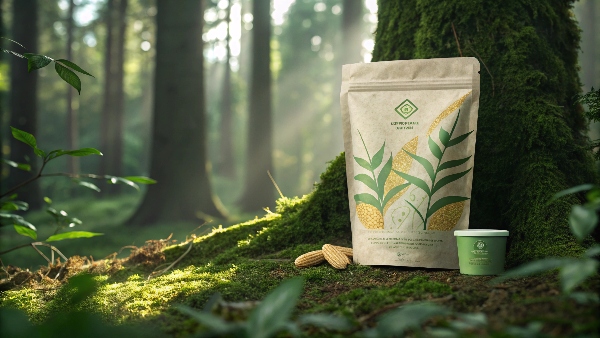
In a world increasingly concerned with sustainability, cornstarch packaging has emerged as a viable option. But, like any solution, it comes with its own set of challenges. Let’s dive into the details.
Why is Cornstarch Packaging Good?
Cornstarch-based packaging has gained traction due to its environmental benefits. But what makes it stand out in the packaging industry?
Its biodegradability, renewable sourcing, and versatility in various packaging applications make cornstarch packaging a promising alternative. But are these advantages enough to make it the go-to choice?
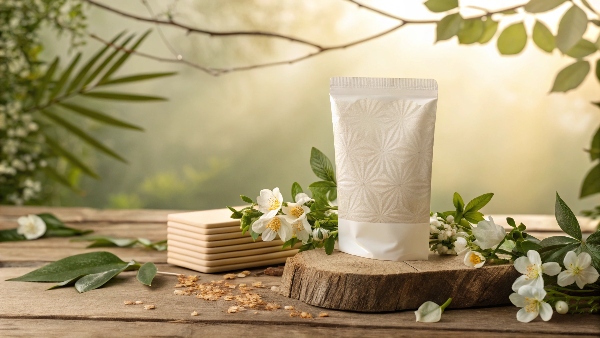
Biodegradability
Cornstarch packaging is biodegradable, meaning it can break down naturally in the environment. Unlike conventional plastics, which can persist for centuries, cornstarch breaks down in weeks or months, depending on conditions.
Renewable Resource
Made from corn, a renewable resource, cornstarch packaging is much more sustainable than petroleum-based plastics. The raw material, corn, is grown annually, reducing reliance on finite resources.
Versatility in Packaging
Cornstarch can be molded into various shapes and sizes, offering versatility in product packaging. From food containers to shipping materials, cornstarch has broad applications, proving to be a flexible alternative to traditional plastic.
Are Cornstarch Bags Environmentally Friendly?
While cornstarch bags are marketed as a sustainable option, how green are they really? Let’s examine the environmental claims.
Cornstarch bags reduce plastic use and are biodegradable, but how do they compare to compostable materials, and how do they break down in nature?
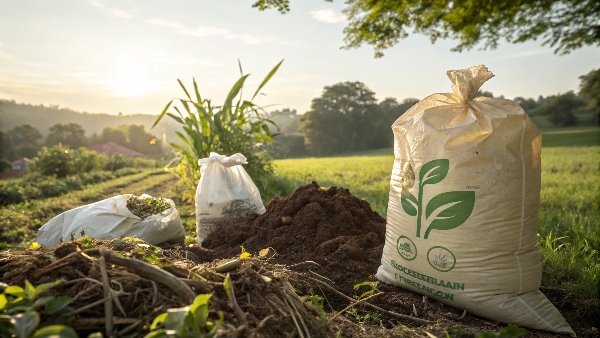
Reduced Plastic Use
By substituting traditional plastic with cornstarch-based materials, the environmental impact of packaging waste is significantly reduced. Plastic bags take hundreds of years to degrade, whereas cornstarch bags naturally break down much faster.
Biodegradable vs. Compostable
It's essential to distinguish between biodegradable and compostable. While cornstarch bags are biodegradable, they may not be fully compostable in typical home composting settings, as they require specific conditions for optimal breakdown.
Decomposition Process in Nature
In ideal conditions, cornstarch packaging decomposes in soil or water, reducing its long-term environmental footprint. However, in landfills, decomposition is slowed due to the lack of oxygen and light.
How Long Does it Take for Cornstarch Packaging to Decompose?
Cornstarch packaging is often touted for its quick decomposition, but how long does it actually take to break down?
The decomposition timeline of cornstarch packaging depends on various environmental factors. It generally decomposes faster than plastic, but how much faster?
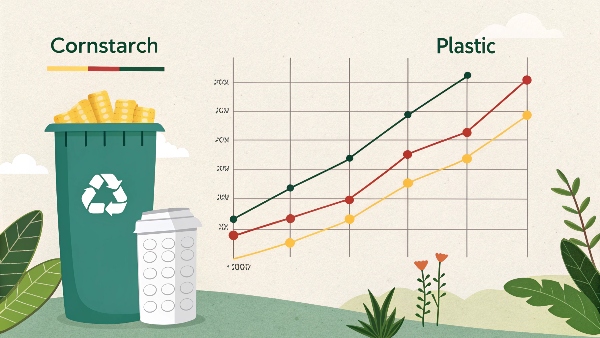
Decomposition in Landfills
Cornstarch packaging can take months to decompose in landfills. However, since landfills are oxygen-poor environments, the breakdown process is slower compared to composting.
Composting Cornstarch Packaging
In a composting environment with proper moisture and temperature, cornstarch packaging can decompose in just a few months. This makes it ideal for industrial composting facilities, but less effective in home composting.
Environmental Factors Affecting Decomposition
Temperature, moisture, and oxygen levels all affect how quickly cornstarch packaging decomposes. These factors can vary greatly depending on the environment, making decomposition unpredictable in some cases.
Is Cornstarch Packaging Expensive?
While cornstarch packaging seems like an eco-friendly choice, does it come at a high cost? Let’s compare its pricing with traditional plastic.
The cost of cornstarch packaging can be higher than conventional plastic due to production challenges, but economies of scale are making it more affordable.

Cost Compared to Traditional Plastics
Cornstarch packaging tends to be more expensive than traditional plastic, primarily due to raw material costs and manufacturing processes. However, as demand grows and production scales up, the price gap is shrinking.
Production Challenges
Producing cornstarch-based packaging involves a more complex process than traditional plastic. This complexity contributes to higher initial costs but is expected to decrease as the industry matures.
Scale of Production and Price Variation
Larger-scale production reduces costs through economies of scale. As more manufacturers enter the market and demand increases, the cost of cornstarch packaging is expected to become more competitive with conventional plastic options.
Why is Cornstarch Packaging Beneficial to Your Business?
Is cornstarch packaging just a trend, or does it offer real benefits to businesses?
Cornstarch packaging not only reduces environmental impact but also offers long-term cost-efficiency and branding advantages, making it a smart choice for businesses.
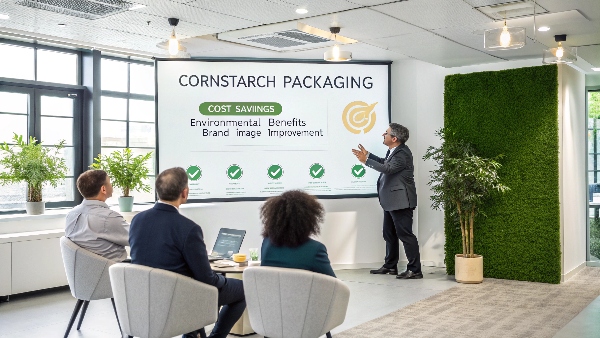
Cost Compared to Traditional Plastics
Cornstarch packaging tends to be more expensive than traditional plastic, primarily due to raw material costs and manufacturing processes. However, as demand grows and production scales up, the price gap is shrinking.
Production Challenges
Producing cornstarch-based packaging involves a more complex process than traditional plastic. This complexity contributes to higher initial costs but is expected to decrease as the industry matures.
Scale of Production and Price Variation
Larger-scale production reduces costs through economies of scale1. As more manufacturers enter the market and demand increases, the cost of cornstarch packaging is expected to become more competitive with conventional plastic options.
Why is Cornstarch in High Demand?
Cornstarch packaging is seeing a surge in popularity. What’s driving this demand?
Eco-conscious consumerism, government regulations, and innovations in biodegradable materials are all factors contributing to the growing demand for cornstarch packaging.
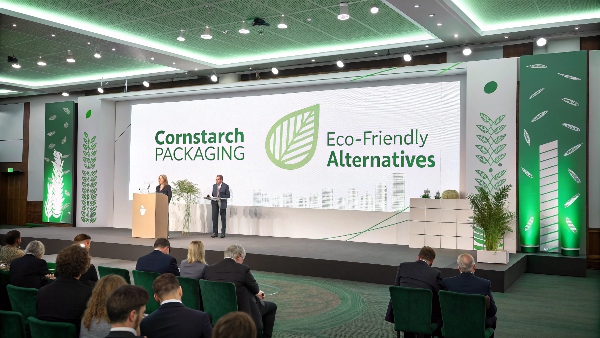
Growth in Eco-Conscious Consumerism
As more consumers become aware of environmental issues, demand for sustainable packaging solutions like cornstarch is increasing. Eco-friendly packaging is no longer just a trend but a growing market necessity.
Government Regulations and Incentives
Governments worldwide are introducing regulations that restrict plastic usage and incentivize the use of biodegradable packaging2. This shift is pushing businesses to adopt alternatives like cornstarch.
Innovation in Biodegradable Materials
Ongoing research and innovation in biodegradable materials have made cornstarch packaging more efficient and versatile, further driving demand across industries.
Is Cornstarch Plastic Safe?
Is cornstarch packaging safe for consumers and the environment? Let’s examine its safety profile.
Cornstarch packaging is non-toxic, but concerns about chemical additives and safety in food packaging persist. Here’s a closer look.
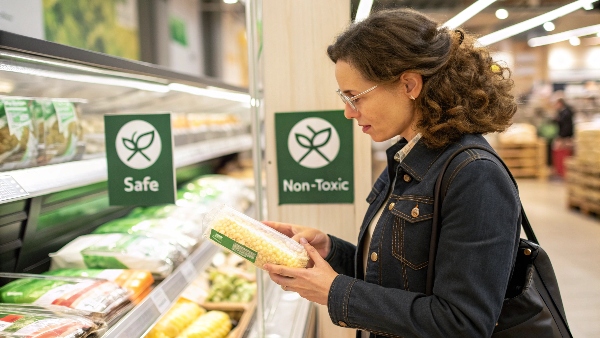 )
)
Non-Toxic Properties
Cornstarch plastic is non-toxic and free from harmful chemicals commonly found in traditional plastics, making it a safer option for both the environment and consumers.
Chemical Additives in Cornstarch Plastic
While cornstarch itself is non-toxic, certain additives used in the manufacturing process may raise safety concerns. It’s essential to ensure that these additives are safe for the intended use.
Safety for Food Packaging
Cornstarch packaging is often used for food containers and packaging, and studies show it is safe for contact with food. However, it’s crucial to verify that the specific product meets safety standards.
Conclusion
Cornstarch packaging offers environmental benefits, but it also comes with cost and performance challenges. As the industry evolves, its advantages may outweigh the drawbacks.

2 Responses
Good shout.
Thank you!